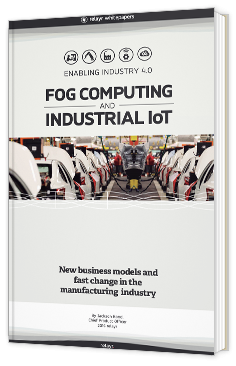

Nouveaux business models et des évolutions rapides dans l'industrie de la fabrication.

"The Internet of Things (IoT) promises to enable many new business models. In industrial markets the concepts of IoT, or Industrial IoT – IIoT is already gaining traction. At the simplest level, for example, it is providing the ability to more closely monitor a production line in near real time, or, in another example, manage buildings and their associated plant more efficiency, but for some the ability to radically change their whole business approach is a ractive.
The possibility to use expensive industrial robots on a service contract rather than buy them outright can change the whole dynamics of the business. Apart from building a new production facility the vast majority of manufacturing sites have been built assuming a 25 – 30 year life. But there are many other examples of legacy assets such as elevators and HVAC equipment in a warehouse, or heavy earth moving machinery at a mining site. For these the emphasis is to quickly reap the commercial and operational benefits that the IIoT can deliver.
While it is easy to grasp the basic concepts behind any IIoT implementation, if you dig a li le deeper there are a significant number of decisions to make in the way it will operate. For example, a cloud platform might well be able to establish trend lines on how o en a motor is switched on/off to activate a conveyor belt, but does it need to rely on the cloud platform to tell it when to turn on or off? Another example might be vibration monitoring of a hydraulic pump on an earth mover where changes over a long timescale are more important than reading values every second.
This whitepaper will illustrate the concepts between IIoT and dependence on a cloud-based computing approach. Taking this a stage further, the paper will introduce the concepts behind adopting a fog computing approach where a cloud platform delegates some aspects of control to local infrastructure elements."